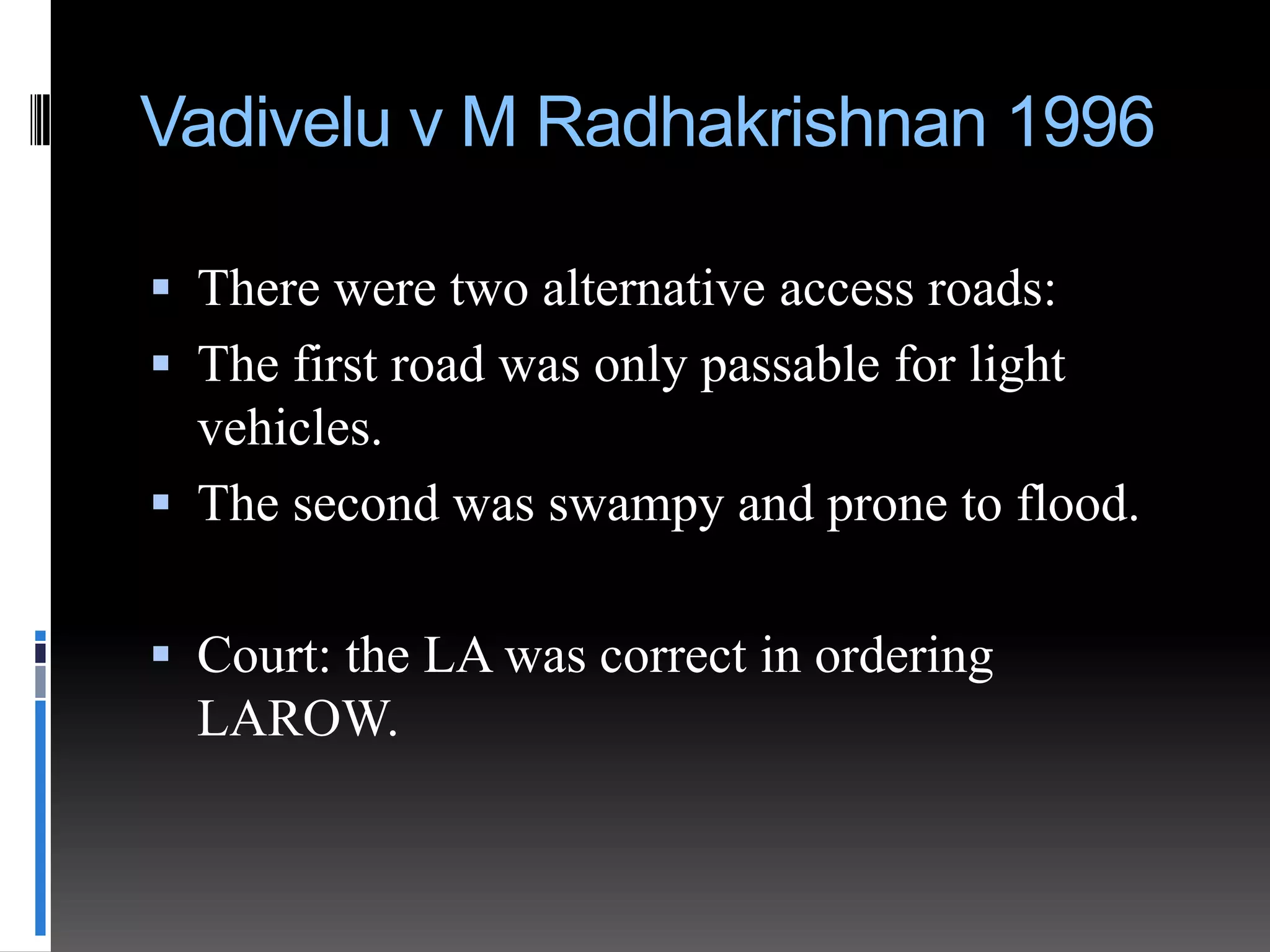This document discusses Land Administrator's Right of Way (LAROW) in Malaysia. It defines LAROW as a right of way created by the Land Administrator over alienated land to provide access between any land and a public terminal, with or without the proprietor's concurrence. LAROW is a type of imposed right that runs with the land and binds successor titles. The document outlines the process for creating public and private LAROW, including applying to the Land Administrator, surveys, compensation, and conditions for extinguishing a LAROW. It also summarizes several court cases related to determining when a LAROW is considered "expedient" over alternative access routes.




![ Case: Lye Thean Soo v Syarikat Warsaw
[1990] 3 MLJ 369
Supreme Court:
“Public rights of way may arise in two ways.
They are either provided by statute, or they are
created by dedication of the soil to the public
use by the owner and acceptance of the
public.”](https://image.slidesharecdn.com/ll1slideslarow-131112214042-phpapp02/75/Land-Law-1-slides-LAROW-5-2048.jpg)
![Creation of LAROW
Sections 390 & 391
1. Apply S390(1)
Private LAROW: make an application in Form 28A
Public LAROW: apply to LA if he thinks expedient, no
form.
2. LA hold an enquiry / makes an investigation.
S390(2)
Is LA under an obligation to hold an enquiry?
Case: Thankam de Silva [1995] 4 CLJ 584
Held: Discretion of LA whether or not to hold an
enquiry. If h has sufficient facts, may decide without
holding an enquiry.](https://image.slidesharecdn.com/ll1slideslarow-131112214042-phpapp02/75/Land-Law-1-slides-LAROW-6-2048.jpg)










